“We’re going to Costa Rica to look for orchids.” Orchid hunting is probably not the first reason you’d think to travel to Costa Rica for. Most people go for the jungle, wildlife watching, the beaches, the “adventure” activities, or bird watching. While we definitely went to look for birds, wildlife, and other plants, orchids were heavily sought out during a few spots along the month-long trip. Those locations were mostly in Monteverde while hiking up to Cerro Chirripo, and anytime we were on a canopy bridge. If interested in the full trip log, I wrote this blog post for those curious.
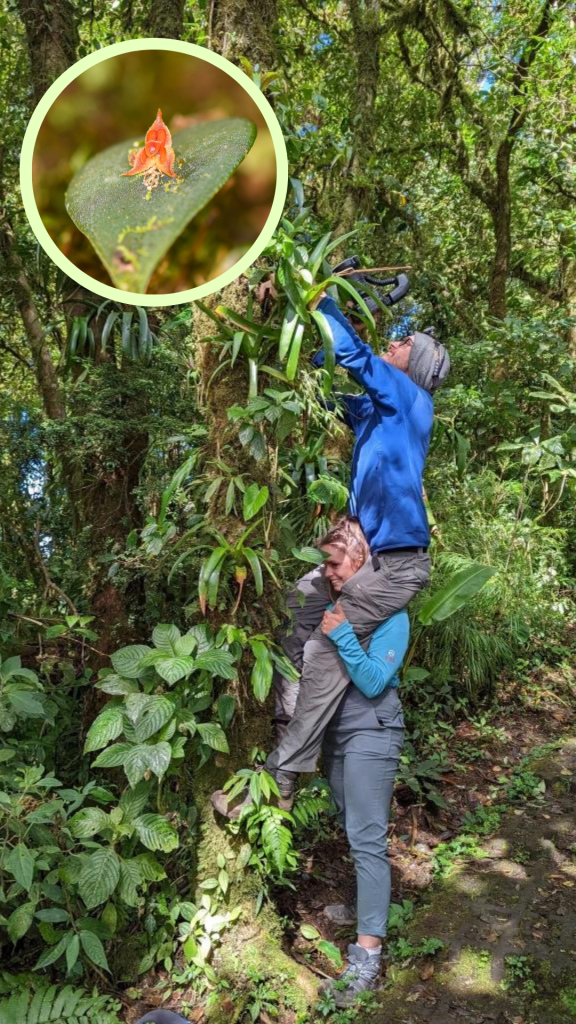
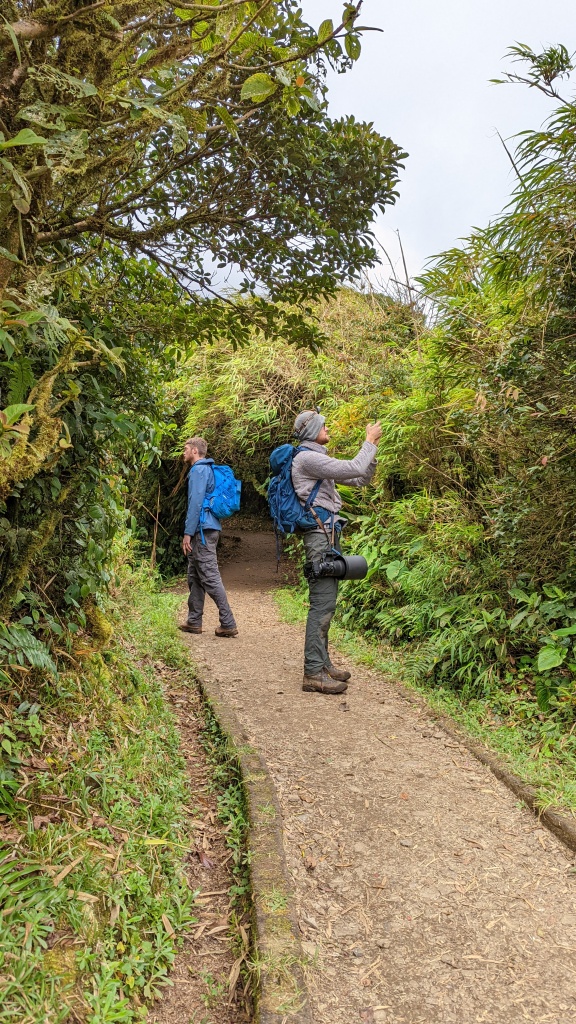

We went in knowing most orchids are epiphytic, so we had to flip the switch in our brains from looking down on the ground for plants to looking up on tree branches and bark. But we also had to be on the lookout for fallen branches, allowing us to search for orchids that were once way up in the canopy.
If interested in learning a bit more about epiphytic plants of the non-vascular type, I wrote about the topic in this blog post.
There are an estimated 1,400 species of orchids within Costa Rica, of which 20% are endemic. Wooo bebe, that’s a lot! Orchids are in the family Orchidaceae which hosts 800 genera and 28,000 species. Species records have been recorded since 1846, but are definitely an ongoing study, as species are being described regularly. Just this February a press release informed the world of 20 new orchid species that were found in existing protected areas. We ended up finding about 60 species but uploading 159 observations, so as iNat identifiers find our observations the species count may rise. Pretty good for two total newbs!
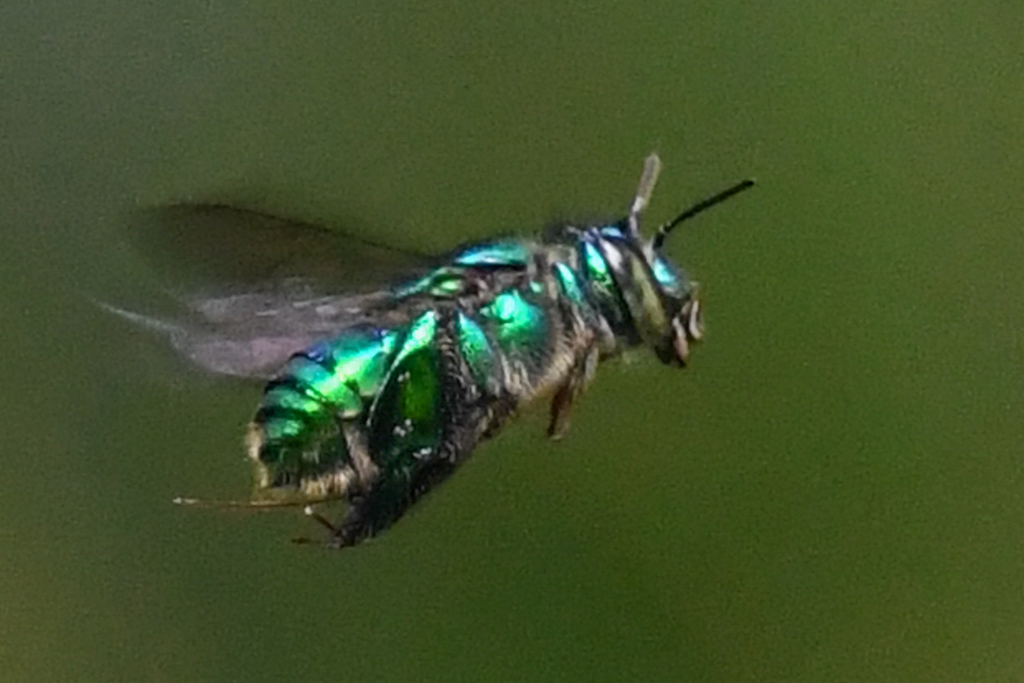
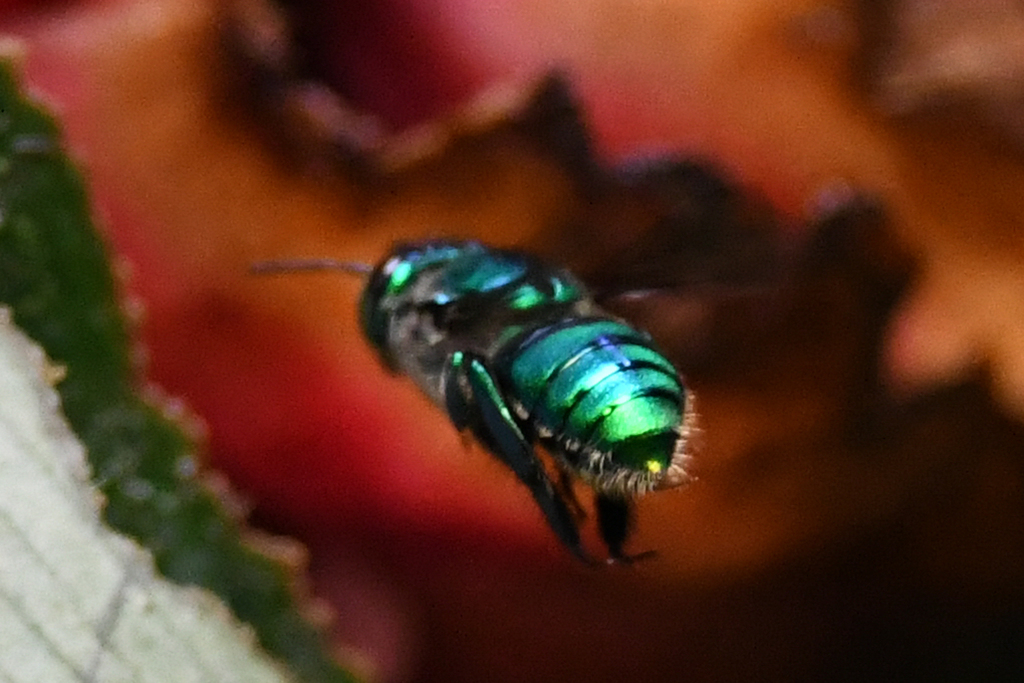
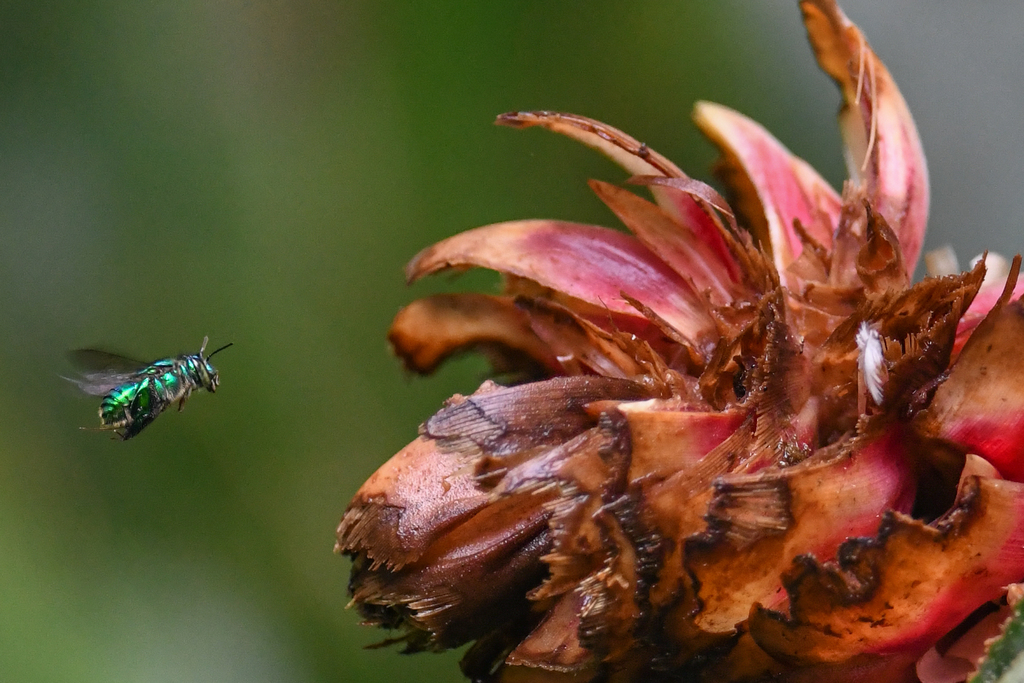
Orchids, like most other flowering plants, orchids have evolved to rely upon pollinators to transfer genetic material from one plant to another. For Costa Rican orchids one of the main pollinators is Orchid bees, Genus Euglossa. The bees have extremely long tongues, very useful for reaching the sugary nectar at the very bottom of a flower. Hummingbirds are also fantastic pollinators, with many examples of fascinating evolutionary arms races, but that could be a whole other blog post.
In addition to their ridiculously long tongue, the bee’s mating rituals also benefit the orchids. Classic co-evolution bebe! Males roam the jungle in search of orchids and snag any desirable scents which are collected on their hind legs via a specialized organ. The concoction of scents acquired by the male is desired by the corresponding females. Sometimes the plants don’t even have nectar for the bees, a specific scent is enough to get them to visit the flower, so the orchid benefits overwhelmingly in this partnership. Why produce nectar if you don’t have to? These bees are a whole blog post in themselves, if you want to read more, this Smithsonian article has more interesting tidbits.
Now I’ll break down three of the common genera we observed during our trip.

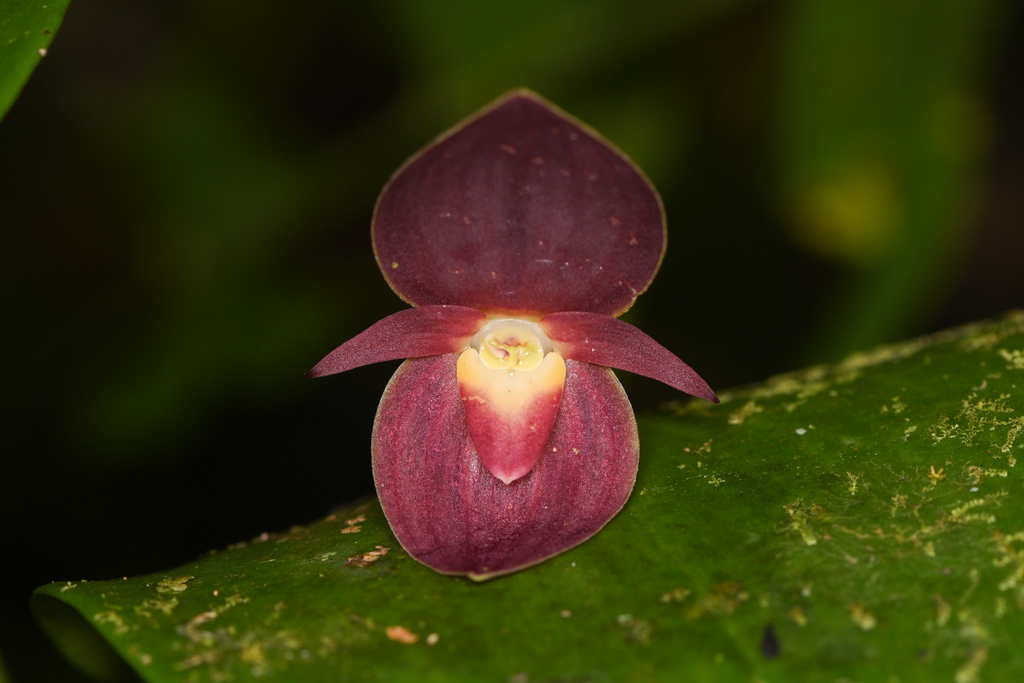

Genus Pleurothallis
Also known as bonnet orchids these hooded orchids to me resemble frogs. Like some frogs, these orchids can be epiphytic and terrestrial. Oooof this is a big Genus, with 1,200 members, and they only exist in the New World. The unique characteristic of this group is two pollinia. One pollinium (pollinia is plural) is a sticky mass of pollen grains produced by one anther.
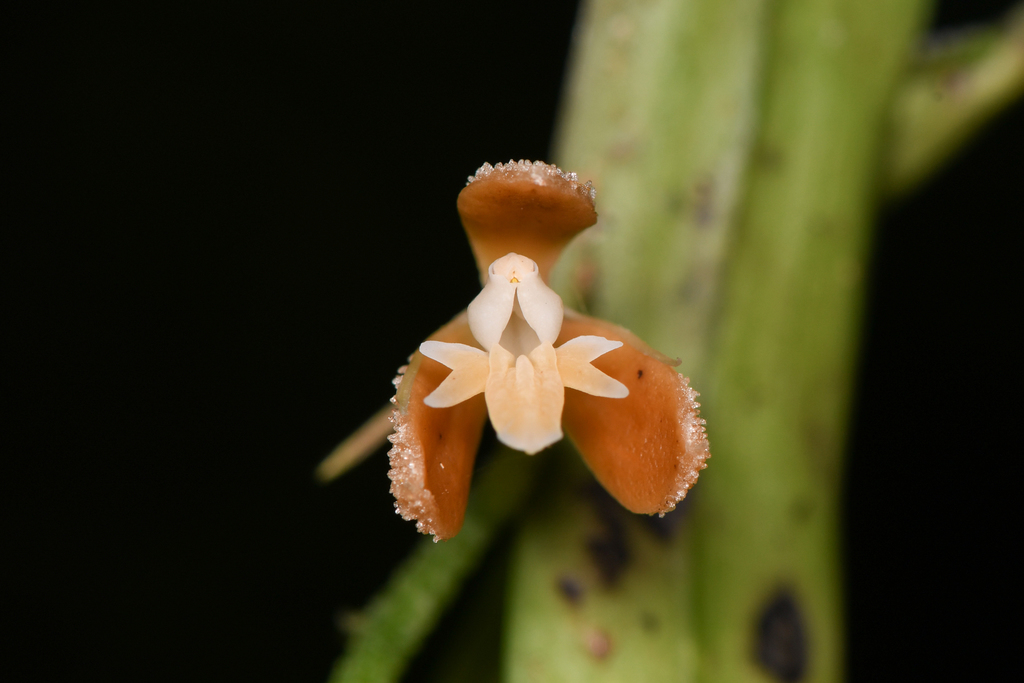
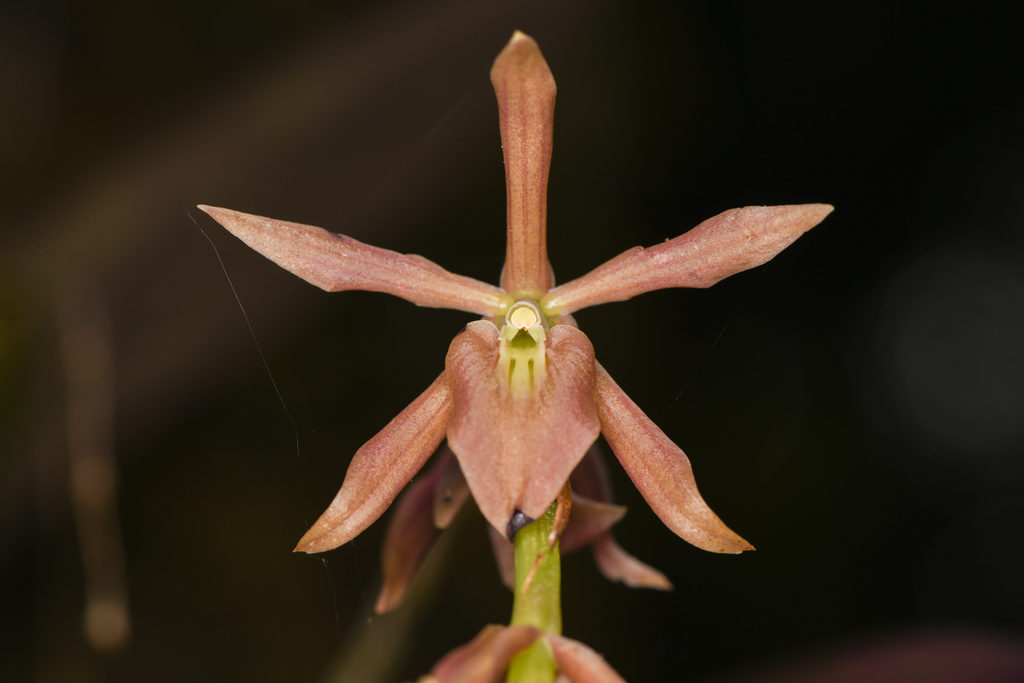


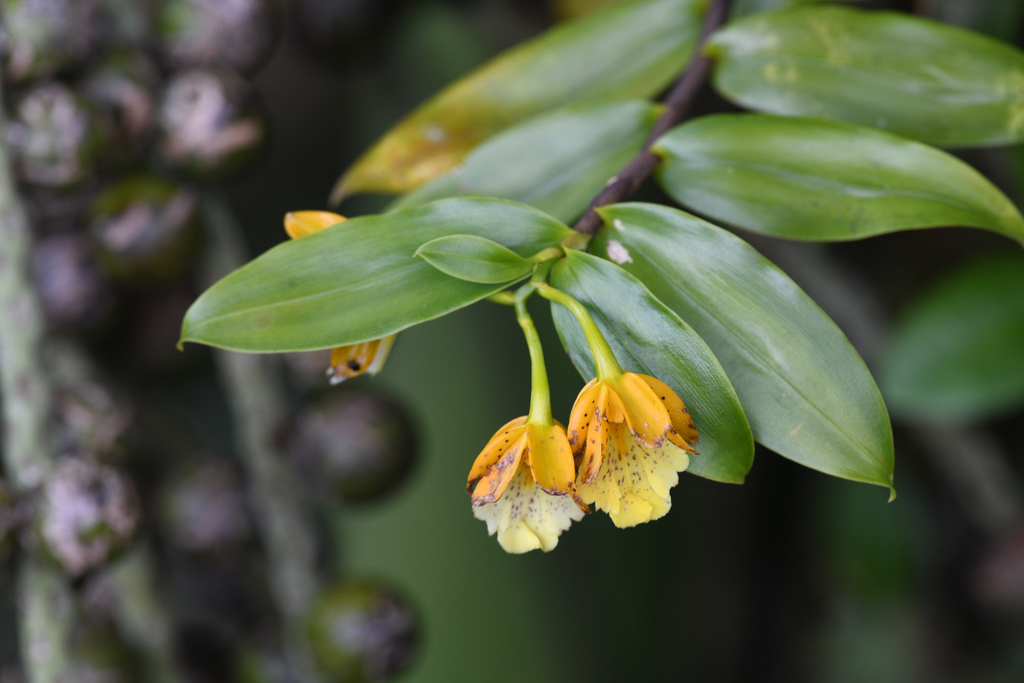
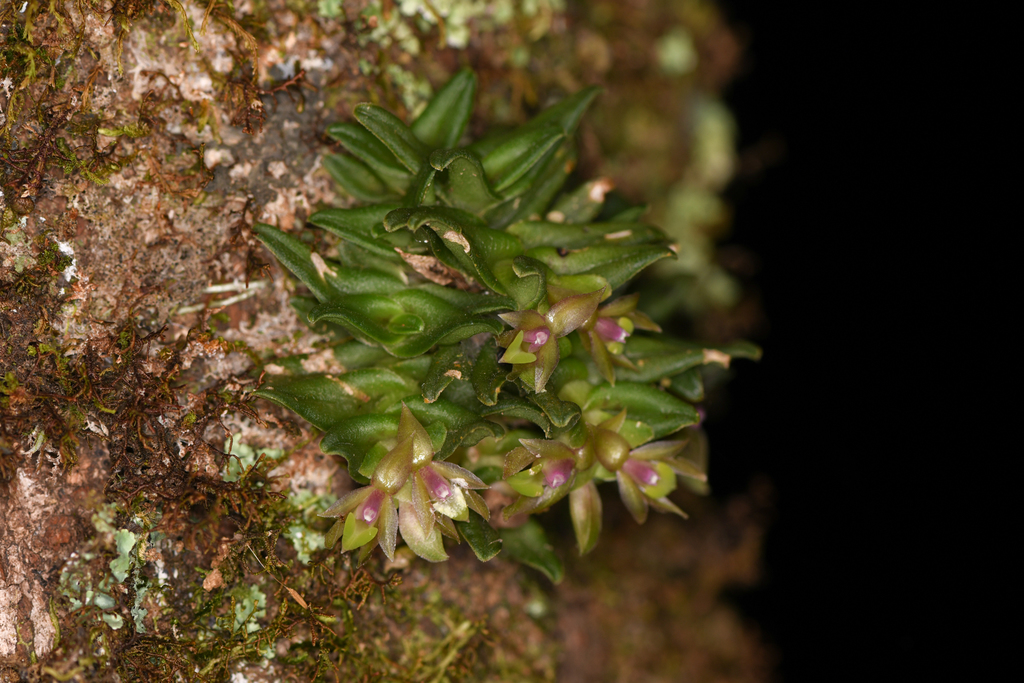
Genus Epidendrum
Has over 1,500 species within the Neotropical region and therefore spans many habitat types, altitudes, colors, and structural forms. The greek word epi and dendron translates to “upon trees” which of course refers to the epiphytic growth type of many species within this genus, but not all! What tricksters.
While we observed most of all our orchids within parks or preserves and on their trail systems, interestingly many members of this genus do well in disturbed habitats. So in some instances, certain species have become more common due to human-caused disturbances such as on the roadsides from logging activities.
The diversity of this genus is really nuts, no wonder they are cultivated and hybridized.
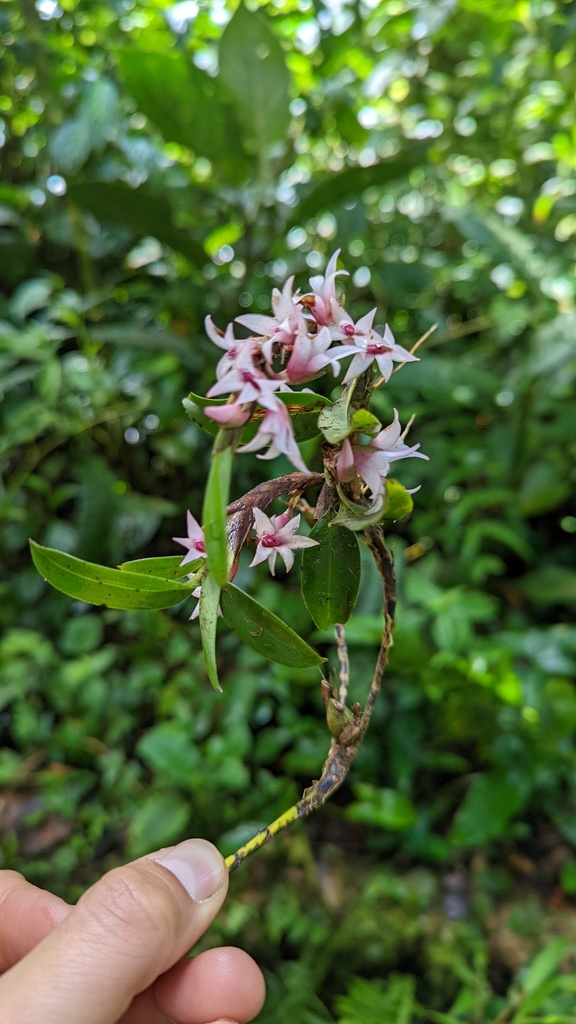
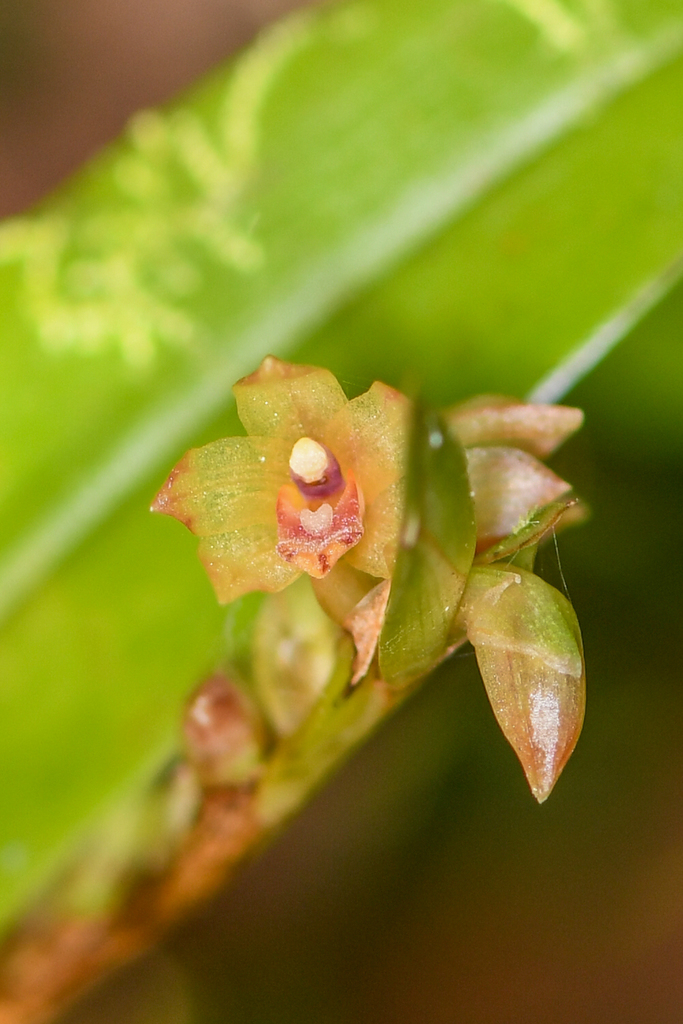

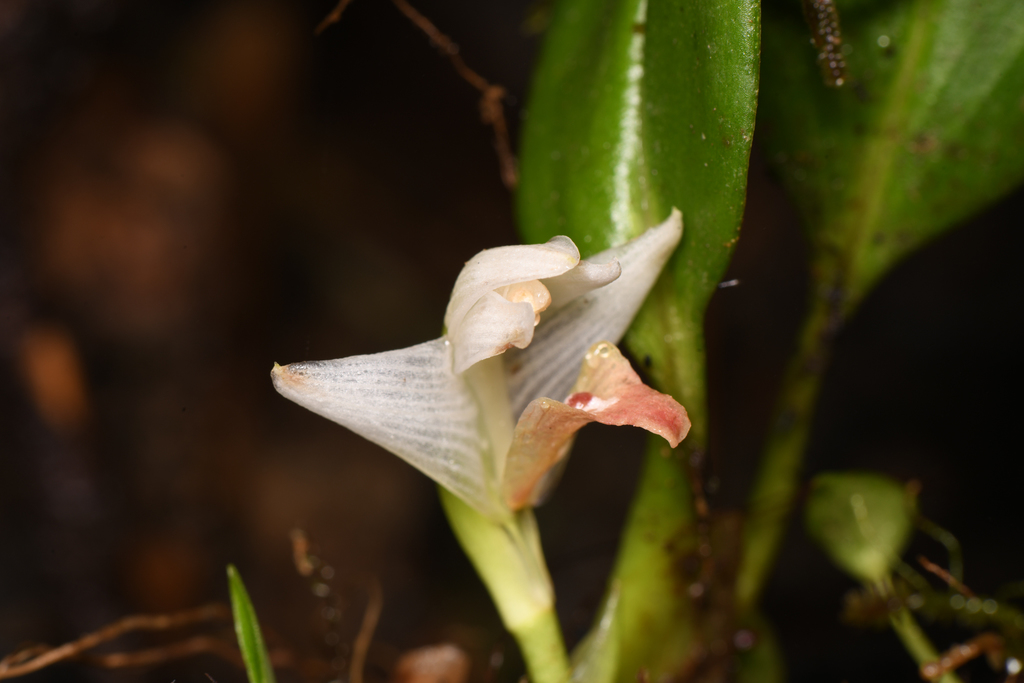
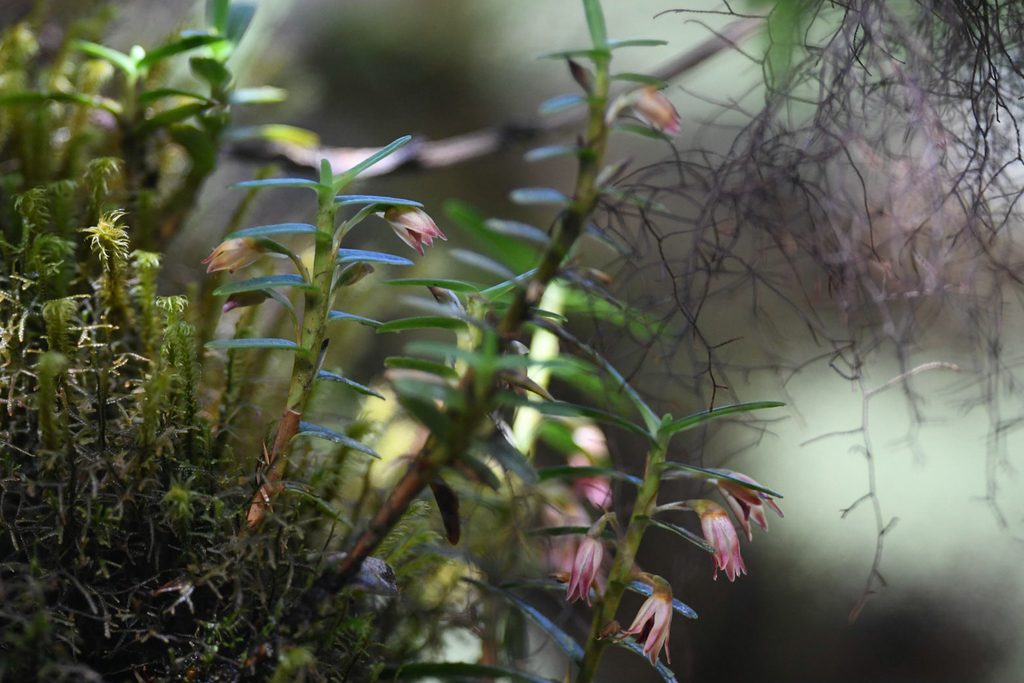
Genus Maxillaria
Maxillarias were one of the first genera that were easily distinguishable from others. Often higher up, away from our reach we often used our telephoto lens to photograph them. We would often spot them while on canopy bridges, and if on the ground that usually meant someone was getting on top of someone else’s shoulders. Yeehaw.
Perhaps you can tell from the photos above but this group is described as a “hodgepodge” of groups, composed of very loosely related species. So perhaps when somebody studies this group closer there will be a lot of splitting into different genera or subgenera. Until then they are commonly called “spider orchids, “flame orchids” or “tiger orchids” rawwwrrrr. The Latin word maxilla, might seem common because it means jawbone, due to the protruding lower lip of certain species (look at M. inaudita and the lower right photo above).

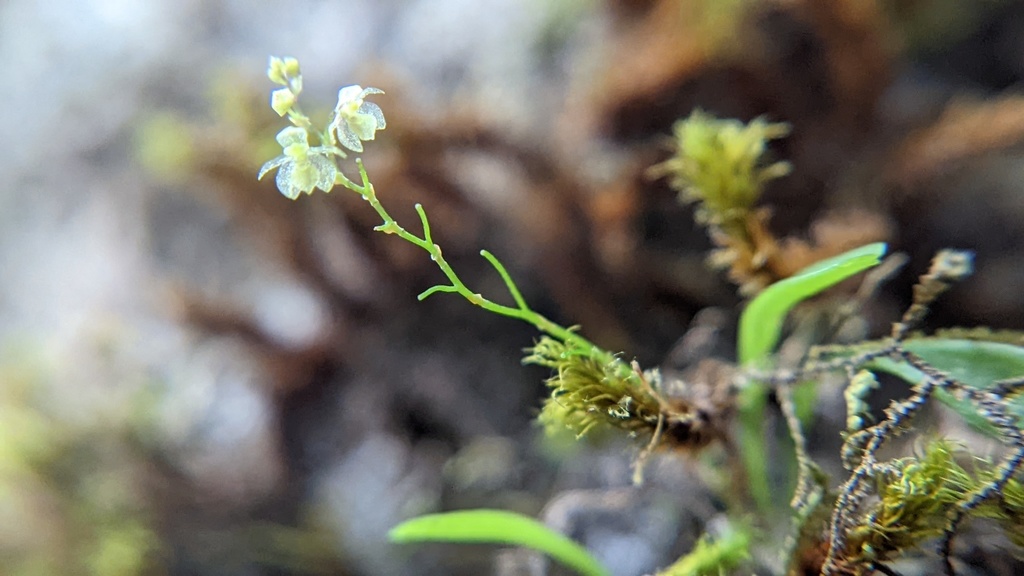
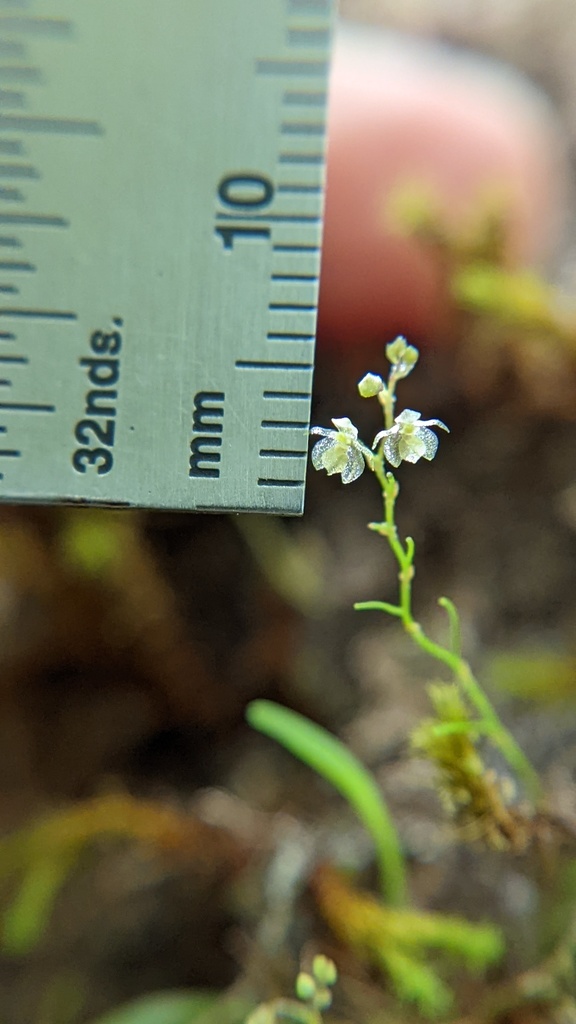
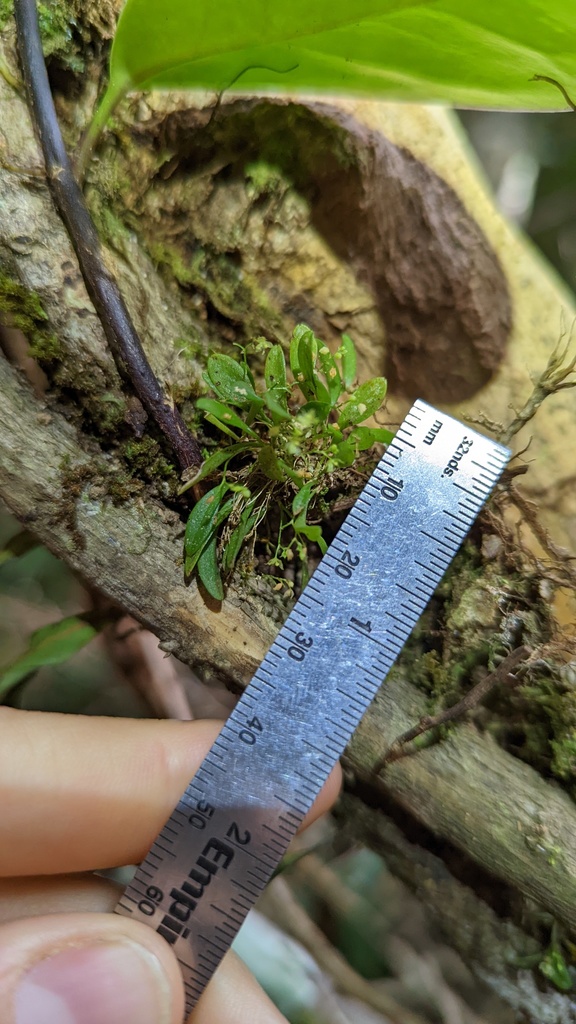

Platystele microtatantha
Now for a teeeeny tiny guy! Platystele microtatantha is one of the world’s smallest, only a whopping 2-3mm across its flower. This Platy in greek means wide or broad, and stele means column, so together this name refers to a wide column of flowers of this genus. That description may be hard to tell in this species because it’s typically recognized as the smallest of the genus.
However, Platystele microtatantha was found to NOT have mycorrhizal associations. A 1990 study with collections from La Selva and Monteverde Costa Rica found Platystele microtatantha, along with eight other species did not have any detectable mycorhizal associations. Why? It’s hypothesized that the habitat it was growing in had insufficient resources, or the habitat was too dry or exposed so the mycorrhizal associations weren’t recruited and maintained. A 2010 study showed that “substrate mat composition or thickness, branch circumference, taxonomic differences of the orchid species or relative age of the orchid individual” had “little influence. . . on the recruitment of AM fungal infections” (Smestad, 2010).
Like thousands of other plants on our one and only planet, many Costa Rican orchids have mycorrhizal associations. Approximately 92% require the fungal associates to increase the plant’s own ability to uptake nutrients and water from its environment. Many. . . essentially all the orchids I have displayed in this blog post are epiphytic, meaning they grow on other plants, like trees. Tree limbs, tree bark, vertical, horizontal, wherever these orchids plop down on and thrive isn’t the ground, and not on soil so they typically adopt a fungal partner at some point in these nutrient-poor environments.
terrestrial Orchids
Even though the overwhelming majority of orchids we observed over a month-long period we did manage to find a few terrestrial species or ones that grow on the ground.
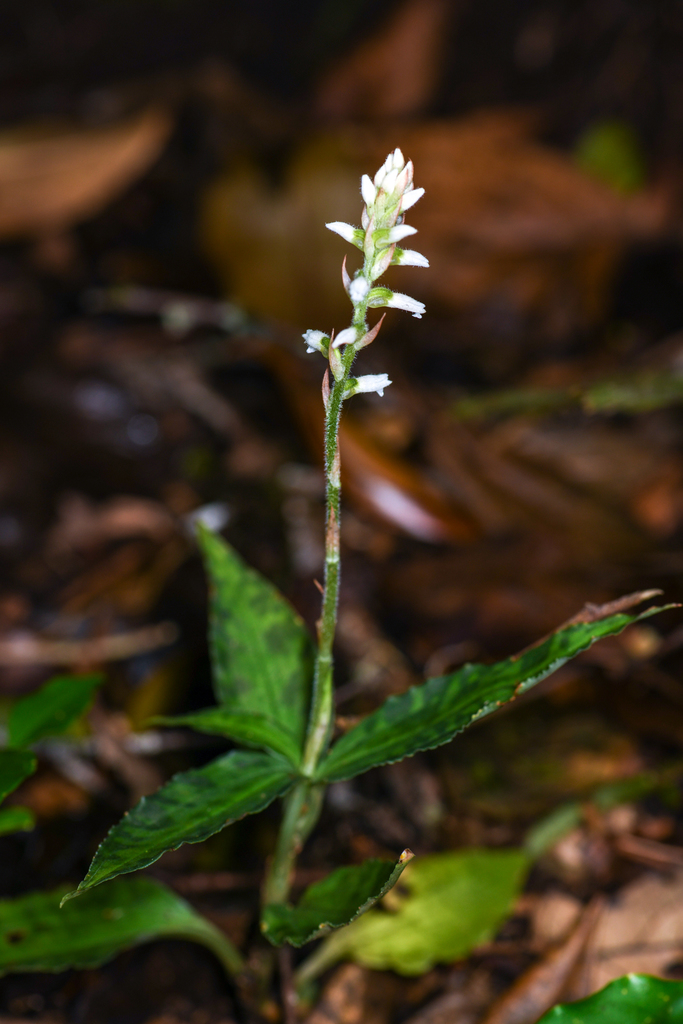
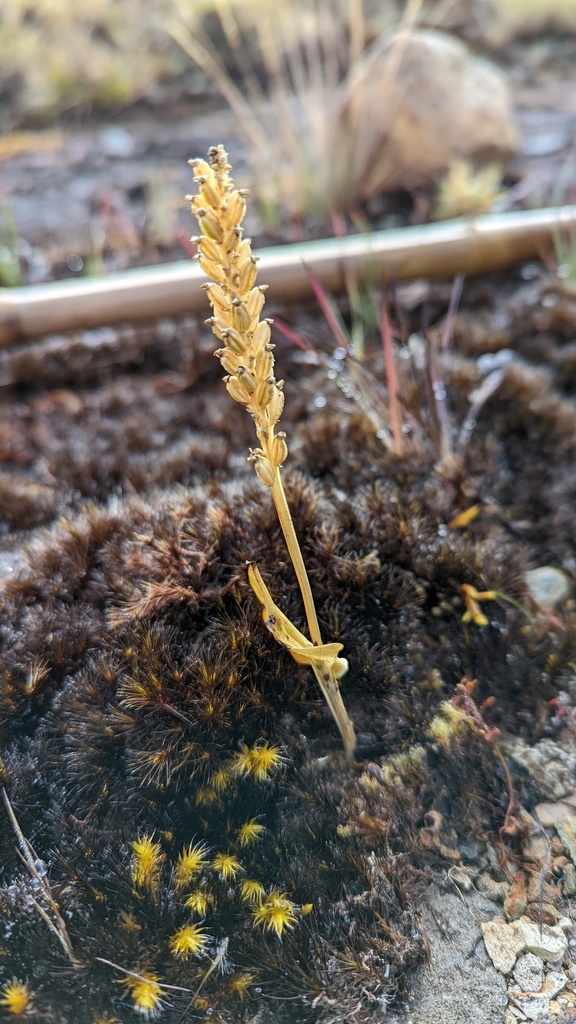


Genus M, also known as Adder’s Mouth, not to be confused with the Adder’s Tounge (Genus Scoliopus) which are present in California where we mostly reside.
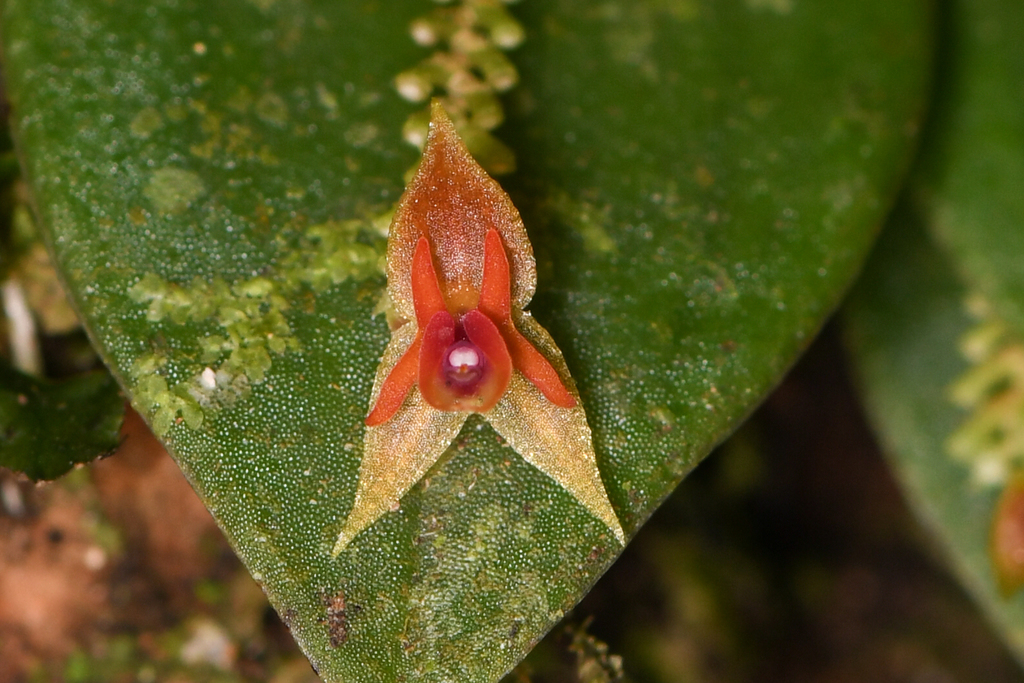

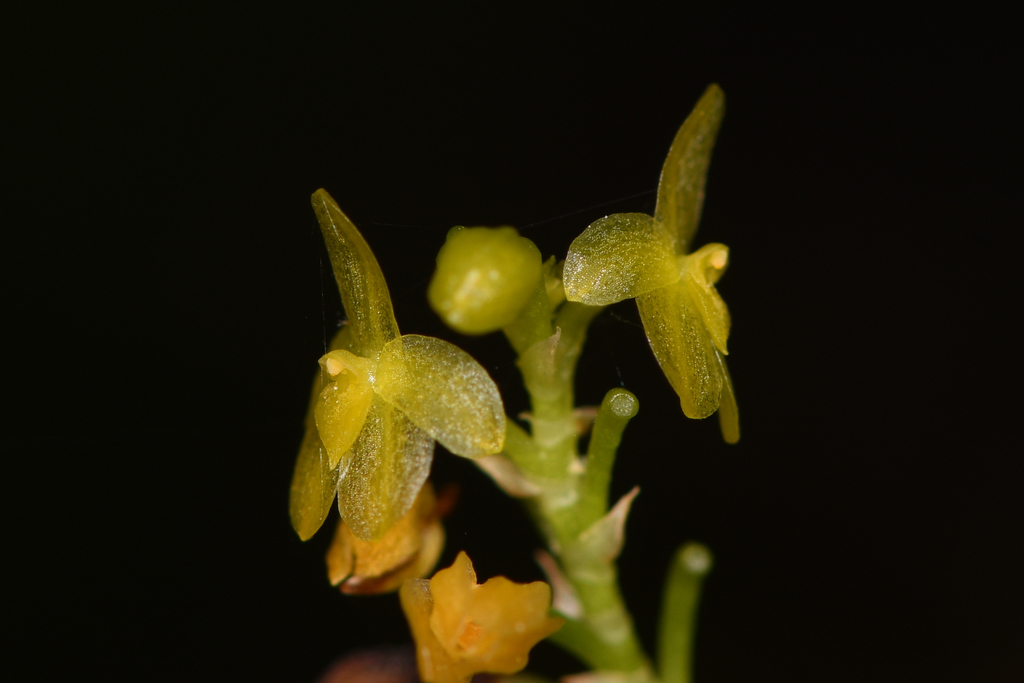


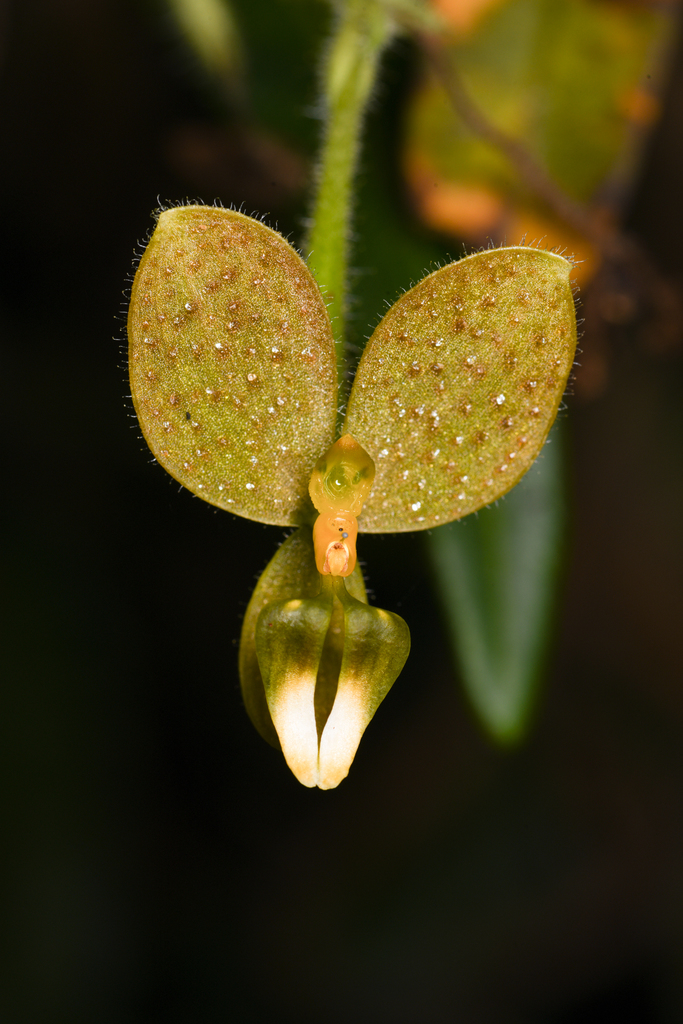




The photos above and below highlight some of the fantastic colors and diversity of Costa Rican orchids. The colorful above, and the elegant shite ones below. Aren’t they stinking STUNNING?!
The Telipogon bullpenensis photo(bottom right) of ours is the only one on iNaturalist, and joins only eight other occurrences on GBIF. This goes to show any amateur can still visit a place like Costa Rica and contribute useful data points and/or photos to the scientific and orchid-admiring community.

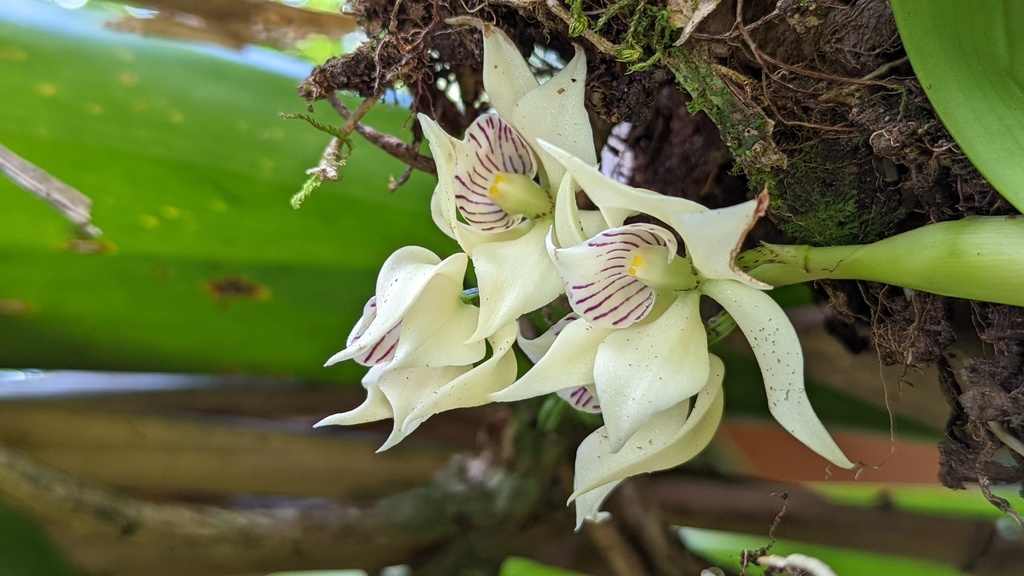
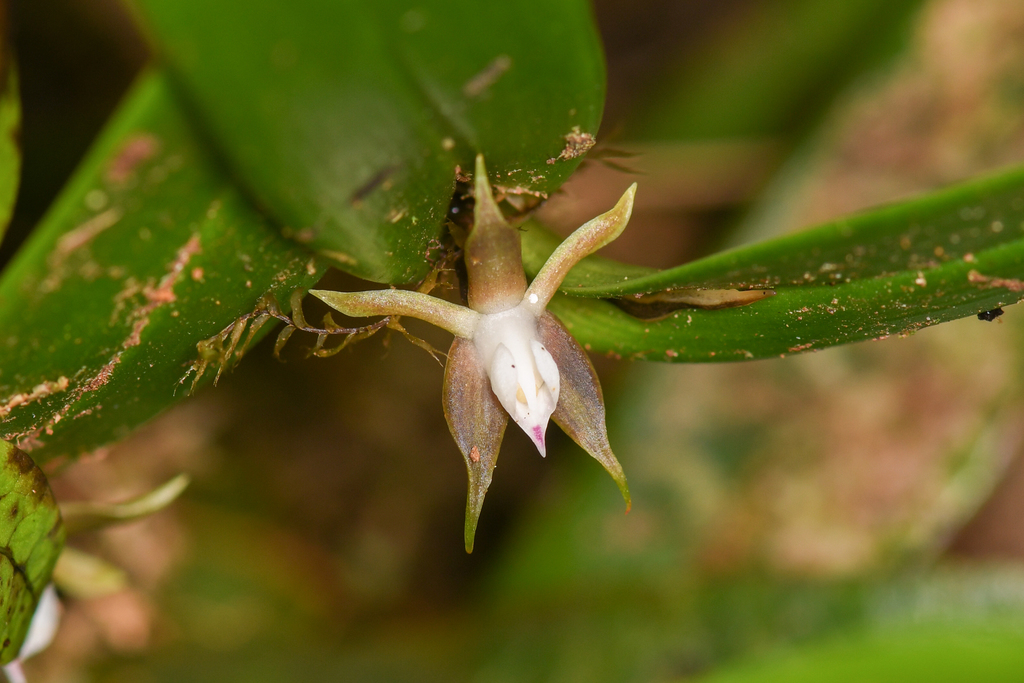
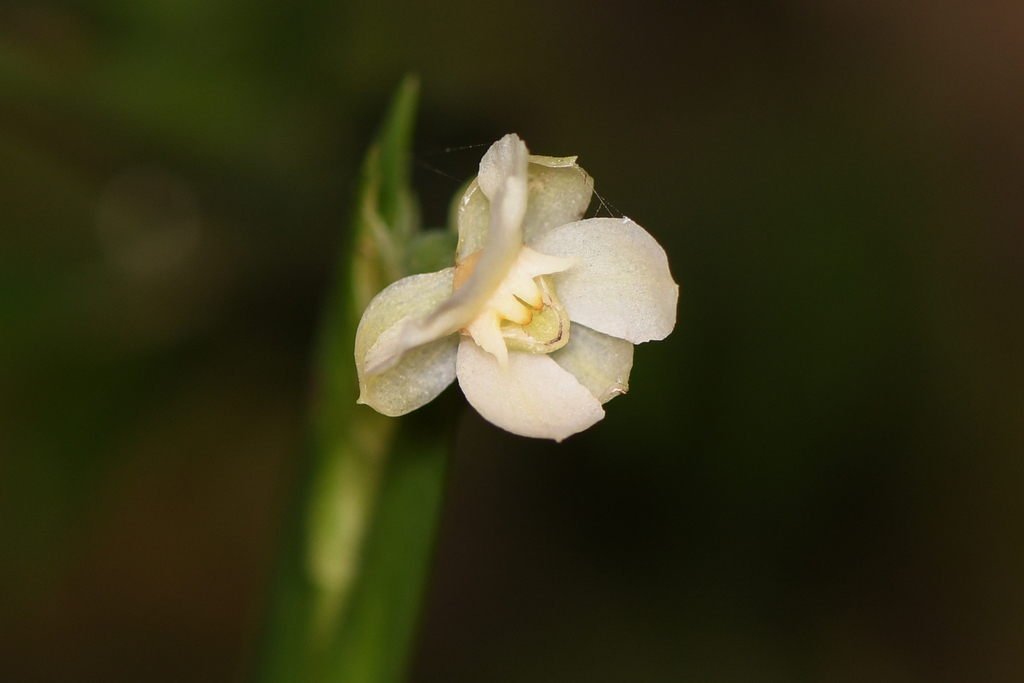
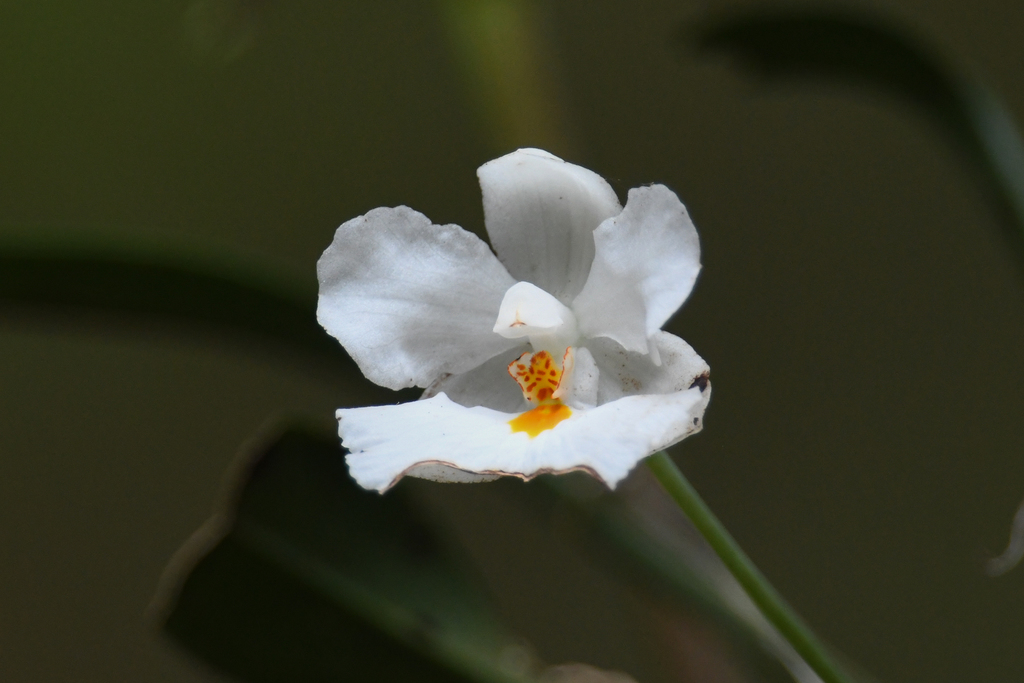

Here are two photos of what hunting for orchids looked like:
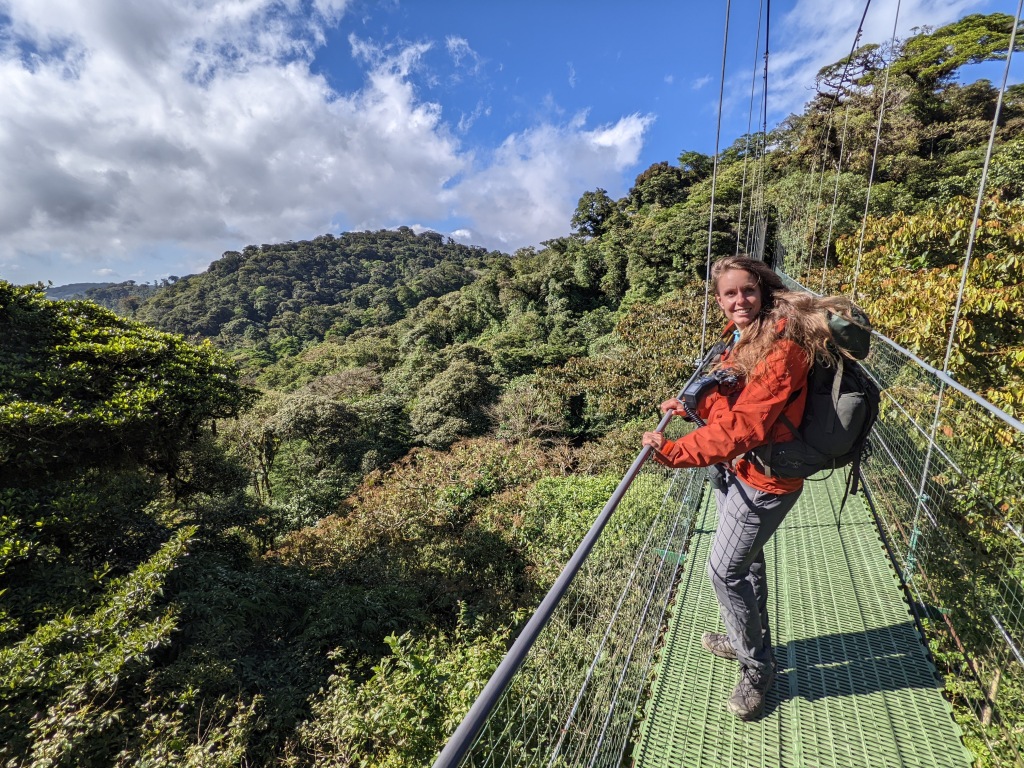
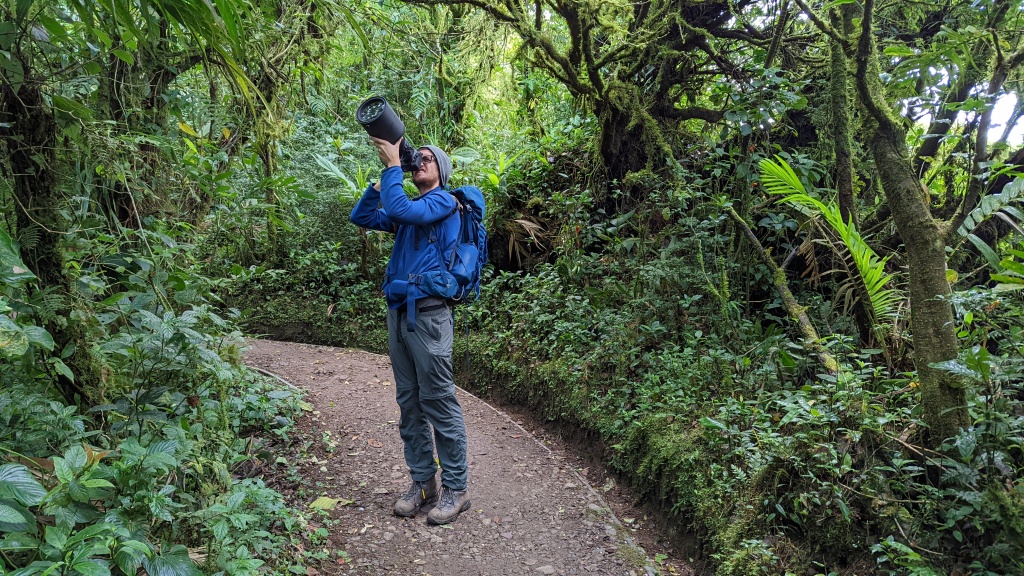
If planning to go orchid hunting in Costa Rica, or any location, so remember to tread and touch lightly. Orchids are often poached to be sold across the globe, so please enjoy their beauty without destroying them. They grow slowly, and reproduce less frequently than most plants, so being delicate is the name of the game.
Going into this trip we knew a lot of our iNaturalist observations would be left at the genus level because many species require photographs of structures only visible if the flower was taken apart. To us this act is unacceptable, especially in a protected area, please consider doing the same.
Resources
- Orchids of Costa Rica a Worldwide Spectacle, Costa Rican News
- How Many orchid species in Costa Rica? A Review of the Latest Discoveries by Diego Bogarin
- Dodsworth, Steven. “849. PLATYSTELE OVATILABIA: Orchidaceae.” Curtis’s Botanical Magazine, vol. 33, no. 4, 2016, pp. 303–09. JSTOR, https://www.jstor.org/stable/48505706. Accessed 21 May 2022.
- Smestad, Logan E. “Abundance of arbuscular mycorrhizae in epiphytic Orchidaceae: abiotic, biotic and taxonomic factors.” CIEE Spring 2010 (2010): 57-67.
- 20 New Orchid Species Found in Costa Rica’s Protected Wildlife Areas
- Almost the smallest orchid in the world by OrchidKarma.com
- What’s that smell? Rachael E. Bonoan PhD Blog
- Pleurothalis, Britannica
- Maxillaria
- Pollinium